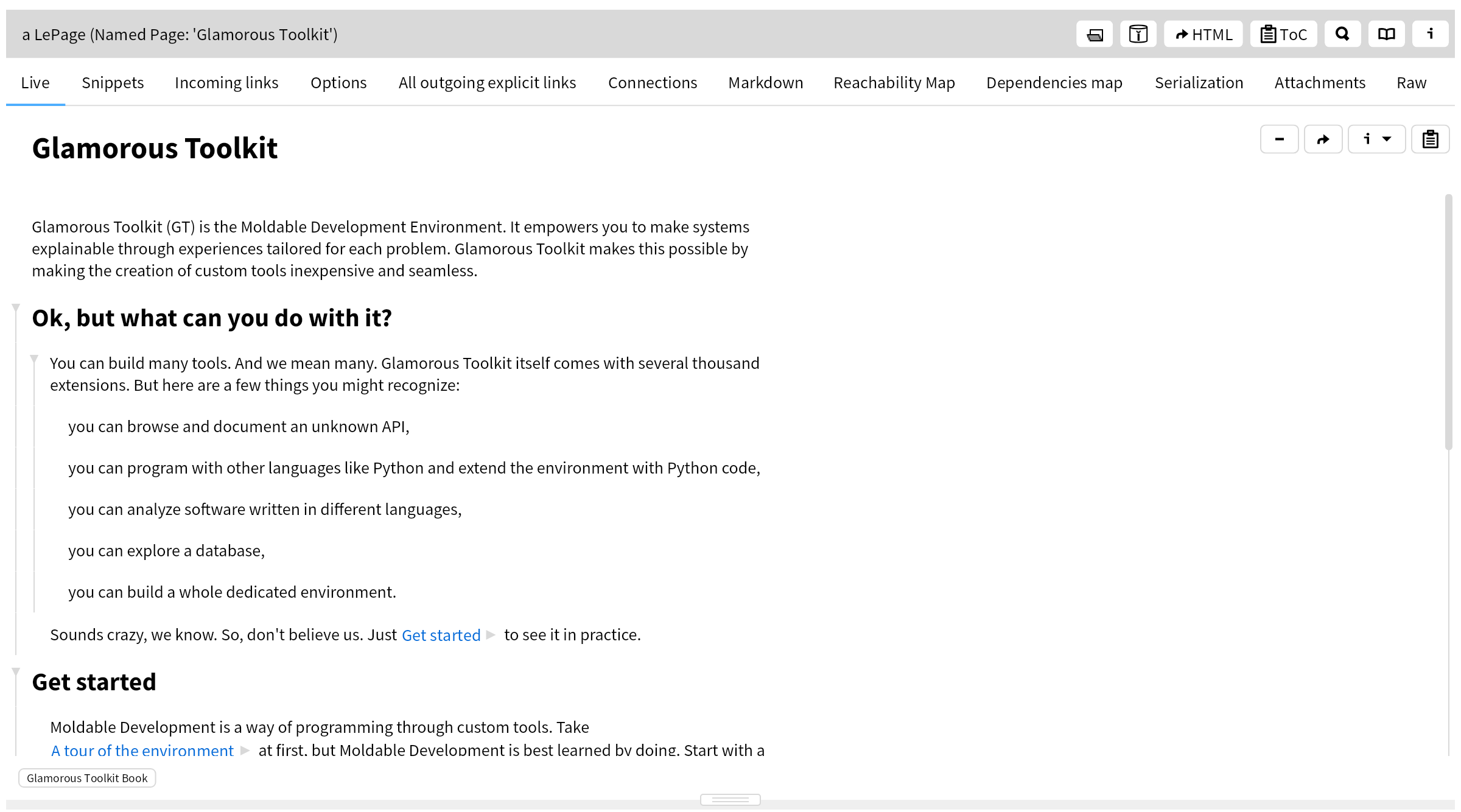Learning how button model works
BrButtonModel
is one of the most essential parts of the Brick widget library. It allows users to create clickable widgets and attach a custom action that will be executed on BlClickEvent
.
By default BrButtonModel
has an empty action that does nothing:

Every button model creates a corresponding event handler that responds to BlClickEvent
:

The following example shows how to create a new button model and attach an action. In this particular case we set #clicked as an inner domain model to be able to assert that the action was indeed executed and also inform users about it:
buttonModelWithAction
<gtExample>
<return: #BrButtonModel>
^ self default
action: [ :aButtonElement :aButtonModel |
aButtonModel model: #clicked.
self inform: 'clicked' ]
The instantiated button model can be attached to any visual BlElement
as its view model. Once attached, the visual element becomes clickable, as the following example shows:
elementWithButtonModel
<gtExample>
<return: #BlElement>
| anElement aButtonModel |
aButtonModel := self buttonModelWithAction.
anElement := BlElement new
size: 60 @ 30;
background: Color veryLightGray.
self assertEventTarget: anElement hasNoEventHandlerOn: BlClickEvent.
anElement viewModel: aButtonModel.
self assertEventTarget: aButtonModel hasNoEventHandlerOn: BlClickEvent.
self assertEventTarget: anElement hasEventHandlerOn: BlClickEvent.
^ anElement

To test the behaviour of the button model we can simulate a click on the element with attached button model and make sure that the action was performed:
clickOnElementWithButtonModel
<gtExample>
<return: #BlElement>
| anElement |
anElement := self elementWithButtonModel.
BlSpace simulateClickOn: anElement.
self assert: anElement viewModel model equals: #clicked.
^ anElement